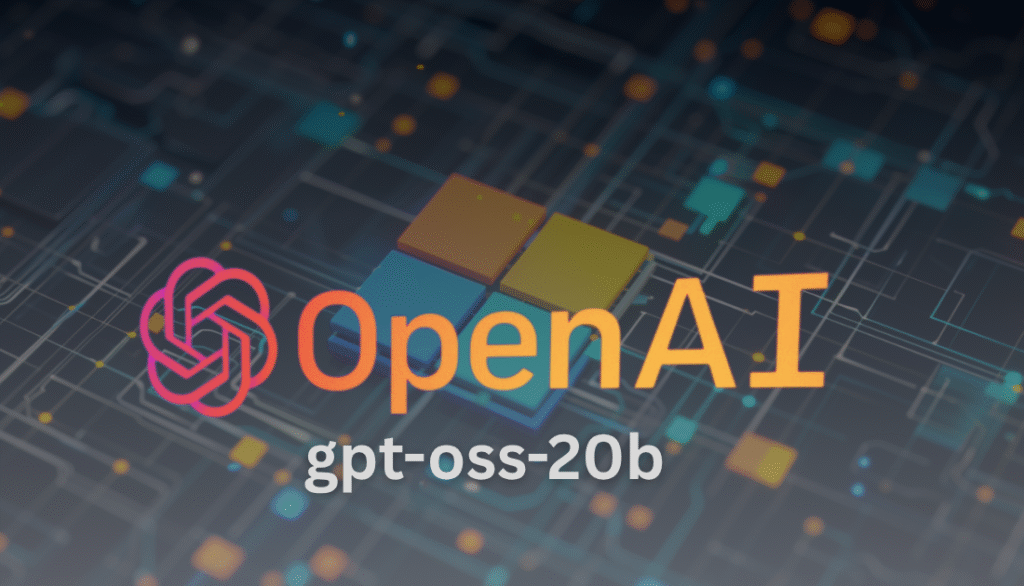Microsoft is integrating OpenAI’s recently released gpt-oss-20b model directly into its Windows 11 ecosystem through Windows AI Foundry—an initiative aimed at simplifying how developers and organizations use open-source AI tools within local applications and workflows.
Highlights
- Windows-native AI integration: Microsoft integrates OpenAI’s open-weight gpt-oss-20b directly into Windows 11 via Windows AI Foundry.
- Locally deployable: Runs on machines with 16GB+ VRAM and modern Nvidia/AMD GPUs, removing the need for constant cloud access.
- Tailored for edge and agentic use cases: Supports tool use, step-by-step reasoning, structured output — ideal for assistants, automation, and low-latency apps.
- Lightweight but capable: Built on Mixture-of-Experts (MoE) with 3.6B active parameters per token, balancing performance and efficiency.
- Text-only model: Does not support images, audio, or multimodal inputs — unlike OpenAI’s GPT-4o or Gemini family.
- High hallucination rate: Shows a 53% hallucination rate on PersonQA, highlighting risks for knowledge-heavy applications.
- Cross-platform rollout planned: Microsoft intends to bring gpt-oss-20b to macOS and other systems, with no official timeline yet.
- Cloud-to-edge flexibility: Available through Azure AI Foundry, AWS Bedrock, and SageMaker — enabling local development and cloud scaling.
- Open-source license: Distributed under Apache 2.0, allowing full commercial use and customization.
- Safety-reviewed before release: Passed evaluations under OpenAI’s Preparedness Framework; still requires safeguards in sensitive environments.
This marks a strategic step by Microsoft to align more closely with the growing movement around open-weight AI models.
A Lightweight, Locally Deployable Model
The gpt-oss-20b model, introduced as part of OpenAI’s new open-weight offerings, is designed for agentic tasks such as tool usage, code execution, and step-by-step reasoning.
Despite its relatively small size, it supports advanced reasoning capabilities while maintaining a lightweight computational footprint.
Microsoft notes that the model can run locally on devices equipped with at least 16GB of VRAM and modern GPUs from Nvidia or AMD—eliminating the need for continuous cloud-based inference.
In a blog post, Microsoft described the model as ideal for scenarios where low-latency and local execution are critical—such as embedded assistants, offline automation, and workflows with limited internet access or constrained compute environments.
Limitations and Performance Trade-offs
While capable, gpt-oss-20b is not without limitations. The model supports only text-based input and output, lacking the multimodal capabilities of more advanced models like OpenAI’s GPT-4o.
Internal benchmarking revealed a hallucination rate of 53% on PersonQA—a dataset designed to evaluate factual accuracy about individuals. This rate is higher than that of OpenAI’s proprietary models and highlights the need for caution in high-stakes or knowledge-heavy applications.
Cross-Platform Availability and Cloud Integration
Microsoft’s rollout extends beyond Windows. The company has confirmed plans to expand support for gpt-oss-20b to macOS and other platforms, though no specific timeline has been announced.
The model is also available via Azure AI Foundry, AWS Bedrock, and Amazon SageMaker, underscoring a hybrid AI strategy that allows developers to build locally and scale to the cloud as needed.
This “cloud-to-edge” approach is designed to support both offline development and enterprise-grade scalability, providing flexibility across a wide range of deployment environments.
Strategic Implications of Open Model Releases
The gpt-oss-20b release is part of OpenAI’s broader shift toward transparency. It is the company’s first open-weight language model since GPT-2 in 2019 and is distributed under the Apache 2.0 license, allowing for unrestricted commercial use and fine-tuning.
The move also reflects competitive pressure from other AI labs like Meta (LLaMA), DeepSeek (R1), and Moonshot AI, which have been pushing forward with increasingly capable open models.
The gpt-oss series positions OpenAI and its partners to engage more fully with the open-source development community.
Designed for Edge and Agentic Applications
Built on a Mixture-of-Experts (MoE) architecture, gpt-oss-20b activates approximately 3.6 billion parameters per token, allowing efficient local inference.
It supports structured output, chain-of-thought reasoning, and tool integration, making it a strong candidate for agentic workflows such as local code assistants or intelligent automation systems.
Safety, Testing, and Transparency
Before its release, gpt-oss-20b underwent safety evaluations under OpenAI’s Preparedness Framework, which included adversarial testing in areas like cyber and biosecurity.
While the model can theoretically be fine-tuned for misuse, it was not classified as “high-risk” by OpenAI or its external reviewers.
Both Microsoft and OpenAI recommend that developers implement additional safeguards—especially when running the model locally or in sensitive environments.


